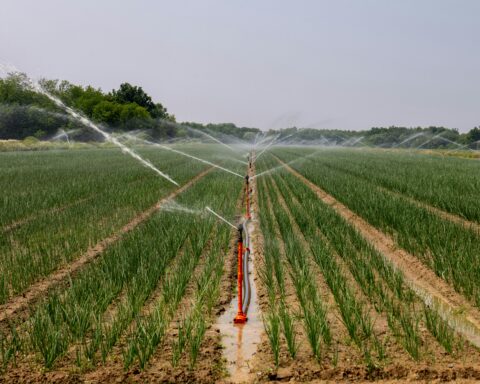The water-contamination crisis in Flint, Michigan, is a cautionary tale about lead piping that underscores why the federal government is requiring public water systems to find and replace old, corroded pipelines that can make water unsafe to drink.
To make sure there is never another Flint, the Environmental Protection Agency (EPA) is making billions of dollars available for water systems to replace harmful pipes. The EPA is also giving public water systems until Oct. 16, 2024, to audit their service lines and report their findings.
The mandate is part of the agency’s Lead and Copper Rules Revisions (LCRR), which details parameters for lead sampling. If lead levels are higher than the EPA’s standards, water systems must correct the problem.
Federal funding to find and replace lead pipes was allocated through the Bipartisan Infrastructure Law (BIL) and is distributed by the EPA. The bill will make $15 billion available over the next five years for inventories and lead line replacement.
Working to avoid future crises
The Flint crisis occurred nearly a decade ago but it is still among the most-harrowing examples of what can happen when lead gets into a community’s water system. In 2014, the city changed its water source from Lake Huron to the Flint River, causing water-distribution pipes to corrode and leach lead and other contaminants into the drinking water. Flint reconnected to the Detroit water system within a month, but that wasn’t enough to correct the problem.
Studies concluded that more than 100,000 people had been exposed to elevated lead levels in their drinking water. It’s also widely believed that the pipes were responsible for a fatal outbreak of Legionnaire’s Disease.
The city dealt with the devastating aftermath for many years, settling more than $600 million in lawsuits and spending another $400 million in state and federal funds to replace lead piping with copper piping.
A similar crisis in Jackson, Miss., caused a full water outage for multiple days in August 2022. Newark, N.J., Chicago and Washington, D.C., have also had lead contamination issues that they worked with the EPA to resolve.
According to government records, states with the largest amount of lead piping in their water systems include Florida, Illinois, Ohio, Pennsylvania, Texas and New York..
What’s Required
Public water systems must complete a full inventory of all pipes and connections and publish their reports by Oct. 16, 2024. They must also identify which lines need to be replaced. Systems that fail to respond to that deadline will be in violation of National Primary Drinking Water regulations. Potential enforcement and penalties would include increased oversight, fines and an administrative order from the EPA.
Pipes fall into one of four categories:
- Lead: Also referred to as a lead service line (LSL), this is a pipe or portion of a pipe made of lead that connects the water main to the building inlet. Goosenecks, pigtails and connectors made of lead are not considered a lead service line.
- Galvanized requiring replacement (GRR): A galvanized service line that is or was at any time downstream of a lead service line or is currently downstream of a “lead status unknown” service line. A galvanized service line that is or has been downstream of a lead gooseneck, pigtail or connector is not considered GRR.
- Non-lead: Service line that is determined to not be lead or GRR.
- Lead status unknown: A service line made of material not known to be lead, GRR or non-lead. Systems are encouraged to reduce their “unknowns” to avoid follow-up requirements.
Systems that serve more than 50,000 people must provide their inventory online. Smaller systems can mail the inventory to customers, upload it to a website or social media, post it in publicly accessible areas or include it in a newsletter. Additionally, all water systems with one or more lead, GRR or lead-status-unknown service lines must submit a replacement plan to the state.
Water systems are required to notify and provide educational materials to homes where water has been designated to be corrupted with lead, GRR or lead-status-unknown service lines within 30 days of completing the inventory.













